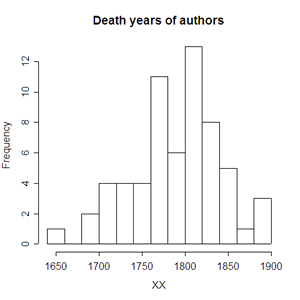
Lenition is a kind of consonant mutation that appears in many languages. Along with assimilation, it is one of the primary sources of the historical change of languages.
Lenition means 'softening' or 'weakening' (from Latin lenis, the root of 'lenient'), and it refers to the change of a consonant considered 'strong' into one considered 'weak' (fortis → lenis). Common examples include voicing or sonorization, as in [f] → [v]; affrication or spirantization (turning into an affricate or a fricative), as in [t] → [ts] or [s]; debuccalization (loss of place), as in [s] → [h]; degemination, as in [k:] → [k]; deglottalization, such as [k'] → [k], etc. Ultimately, consonants may be lost completely. Lenition, then, can be seen as a movement on the sonority scale from less sonorous to more sonorous.
 Some examples
Some examplesIn Celtic, the phenomenon of intervocalic lenition extended across word boundaries. This explains the rise of grammaticalised initial consonant mutation in modern Celtic languages through the loss of endings. A Scottish Gaelic example would be the lack of lenition in am fear /əm fɛr/ ('the man') and lenition in a' bhean /ə vɛn/ ('the woman'). The following examples show the development of a phrase consisting of a definite article plus a masculine noun (taking the ending -os) compared with a feminine noun taking the ending -a. The historic development of lenition in these two cases can be reconstructed as follows:
Old Celtic *(s)indos wiros → OIr. ind fer → in fer → an fear → am fear
Old Celtic *(s)inda bena → OIr. ind ḃen → in ḃen → an bhean → a' bhean
Lenition in Scots Gaelic affects almost all consonants (except /ɫ̪/ which has lost its lenited counterpart). The normal orthography shows this by inserting an h (except with l n r):
In the Celtic languages
In the modern Celtic languages of the British Isles, lenition of the 'opening' type is usually denoted by adding an h to the lenited letter. In Welsh, for example, c, p and t change into ch, ph, th as a result of the so-called 'aspirate mutation' (carreg 'stone' → ei charreg 'her stone'). In late Gaelic calligraphy and in traditional Irish typography, opening lenition (simply called 'lenition' in Irish grammar) was indicated by a dot above the affected consonant. However, since few typesetters had the requisite slug, their convention has been to suffix the letter h to the consonant, to signify that it is lenited. For example, a mháthair (as above) is a Latin alphabet rendering of a ṁáṫair.
Sonorization-type lenition is represented by a simple letter switch in the Brythonic languages, for instance carreg 'stone' → y garreg 'the stone' in Welsh. In Irish orthography, it is shown by writing the 'weak' consonant alongside the (silent) 'strong' one: peann 'pen' → bpeann, ceann 'head' → gceann (sonorization is traditionally called 'eclipsis' in Irish grammar).
For more details, see Welsh morphology and Irish initial mutations.
Consonant gradation

No comments:
Post a Comment